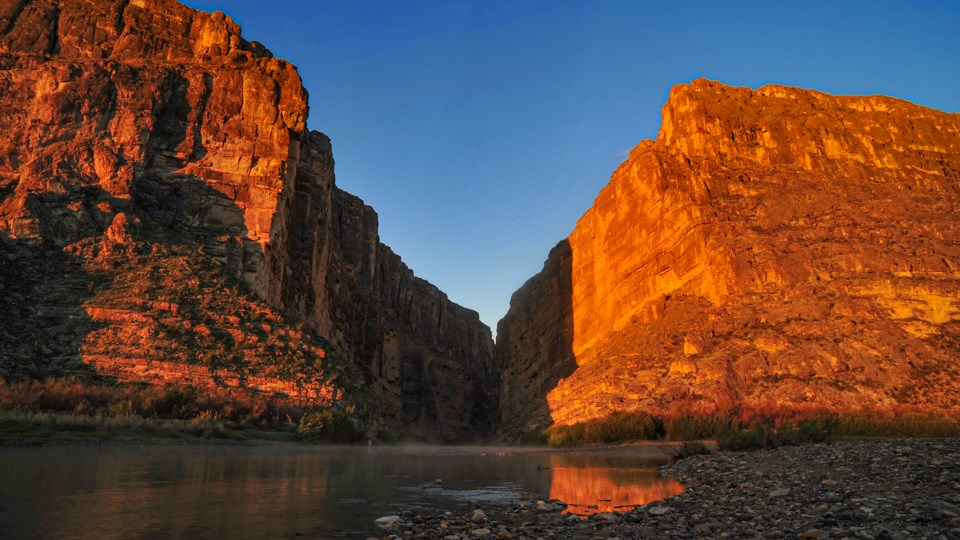
NPS/Mark Schuler The Lifeblood of the Desert "At the heart of the desert there is no drought, there is only an occasional mitigation of dryness," so stated western historian Walter Prescott Webb. Big Bend National Park marks the northern extension of the Chihuahuan Desert, the largest of North America’s four deserts. Although water sources dot the landscape and flash floods occur after heavy rains, the Rio Grande provides the park’s most prominent source of water. The Rio Grande begins its 2000-mile journey from springs and snow melt high in the southern Rocky Mountains of Colorado. As it flows southward, its waters are diverted for flood control, irrigation, power generation, municipal uses, and recreation. By the time the Rio Grande leaves El Paso, so much water has been diverted that the riverbed between the cities of El Paso and Presidio is often dry. Depending upon annual rainfall patterns, 69 to 86 percent of the water in the Rio Grande downstream from Presidio flows from the Rio Conchos, which originates in the Sierra Madre of western Chihuahua in Mexico. The Rio Conchos joins the Rio Grande near Ojinaga, Chihuahua and Presidio, Texas. For more than 1,000 miles the Rio Grande serves as the international boundary between Mexico and the United States; Big Bend National Park administers approximately one-quarter of that boundary. The Rio Grande also defines the park’s southern boundary for 118 twisting miles. It is within this stretch that the Rio Grande’s southeasterly flow changes abruptly to the northeast and forms the “big bend” of the Rio Grande. In 1978, Congress designated a 196-mile portion of the Rio Grande as part of the National Wild and Scenic Rivers System. Only the upper 69 miles of the Wild and Scenic River lie within the park’s boundary; the remaining 127 miles lie downstream of the park’s boundary. The Wild and Scenic Rivers Act directs that designated rivers “...be preserved in free-flowing condition, and that they...be protected for the benefit and enjoyment of present and future generations.” Because the Rio Grande serves as an international boundary, the park’s jurisdiction extends only to the middle of the deepest river channel; the rest of the river lies within the Republic of Mexico. On the Rio Grande Wild and Scenic River section downstream from the park’s boundary, the park administers only from the gradient boundary at the river’s edge on the United States’ side to the middle of the deepest channel. The Rio Grande corridor and its associated natural systems, cultural resources, and recreational opportunities comprise prime visitor attractions. River flow quantities and water quality, however, threaten those natural systems and recreational opportunities. |
Last updated: February 13, 2025
